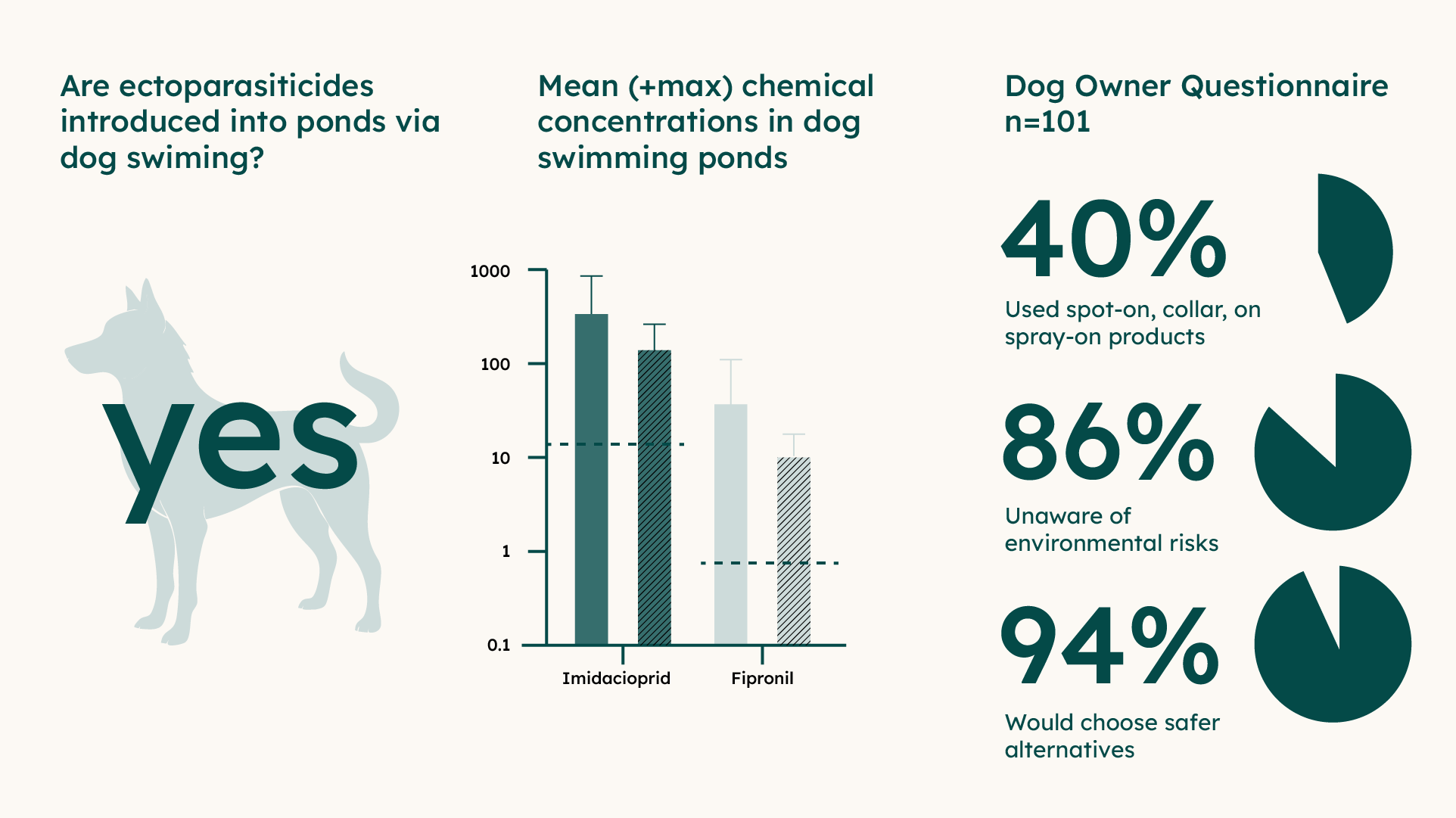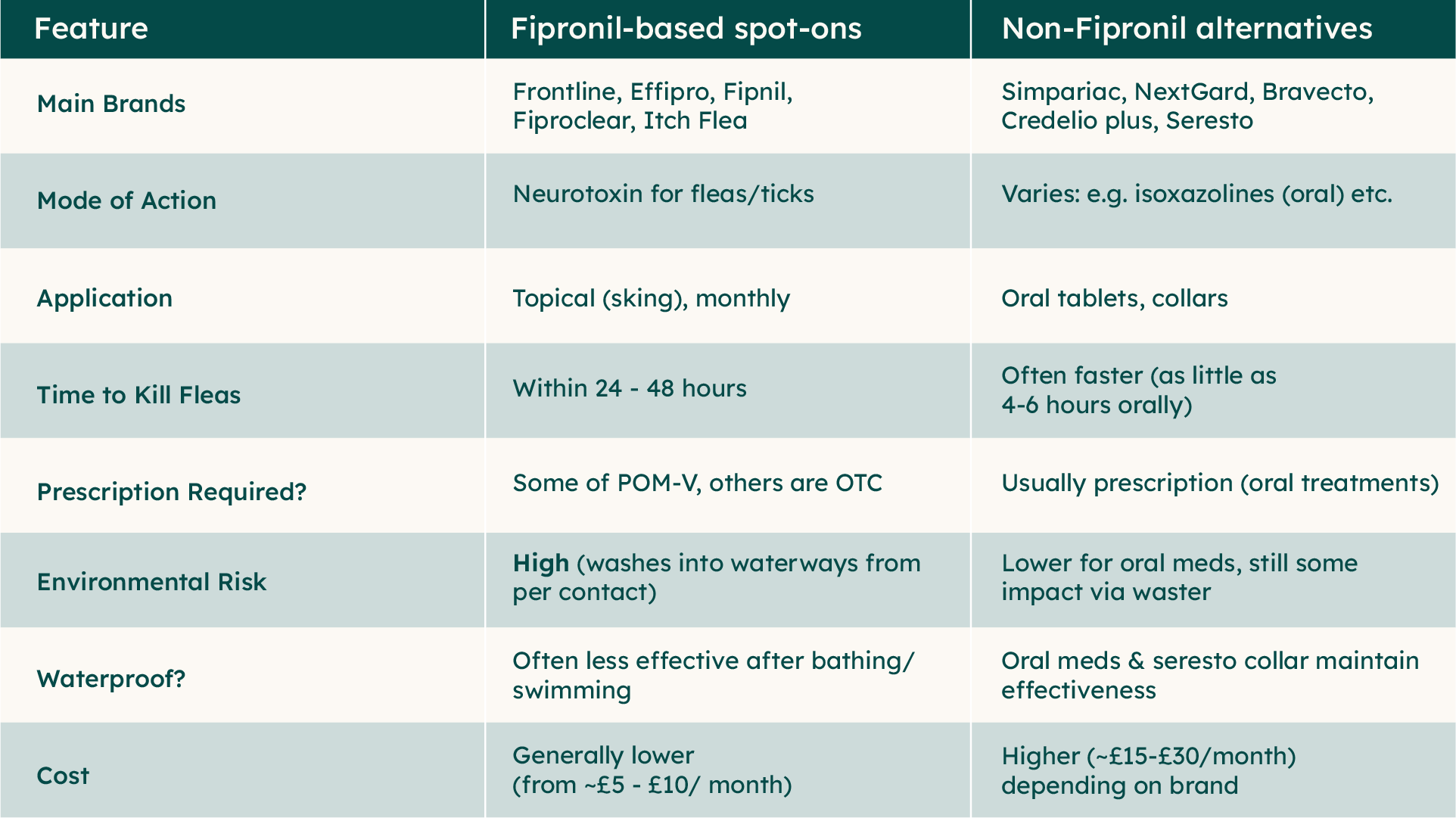BVC will not sell topical products containing fipronil or imidacloprid in response to recent research findings, summarised below. Our Proactive Health Plan is based on risk assessment for every patient.
Fipronil an over-the-counter anti-parasite spot-on treatment for cats and dogs and Imidacloprid (a prescription neonicotinoid flea treatment) have been detected in UK waters at potentially harmful levels with pet treatments identified as the likely source. Since 2014 Fipronil has been detected at 80-100% of Environmental Assessment sites tested. These pesticides were banned in agriculture over ten years ago due to their eco-toxicity. Despite this they remain the main ingredients in over-the-counter treatments such as Frontline©, Spot-On©, Advantage©, Bob Martin Clear Plus© to name a few. Imidacloprid is in Advocate©; a large dog dose is enough to kill millions of bees.
Current risk assessments assume negligible environmental exposure from pet treatments, which needs revisiting in light of recent research.

The Environmental Risk Impact Summary by the Environmental Agency was more concerning.
Results for Fipronil, (and it’s metabolites) and Imidacloprid between 2018 and 2022 were;

Interpretation =
<1000 Critically High Concern
<100 = Very High Concern
<10 = High Concern
We understand there is a need to balance environmental concerns with animal health and welfare and public health, but there are alternatives to these environmental toxins.
The Public Interest Entity (PIE) Group is prioritising improved user guidance, evidence gathering, stakeholder collaboration and potential regulatory refinements in light of recent research.
Despite testing for them, oral treatments such as isoxazolines have not been detected as yet. Examples are; Fluralaner (Bravecto), Lotilaner (Credelio), Alfoxolaner (Nexgauard) and Sarolaner (Simparica)
Evidence Base and Research Links for further reading

Where dog were swimming indicating a high environmental risk. Where no dogs were swimming were undetectable levels.
Sampling for oral parasiticide (tablets) components have so far shown undetectable/no levels.
Also important when choosing your parasite prevention; Consider ‘non-target’ species such as invertebrates in the home, pet invertebrates or otherwise. Tailored advice on safe application, proper disposal and alternative treatment options can help protect non-target species while safeguarding both animal welfare and the environment.
What can we do?
What might the future hold?
Species-specific alternatives to the current anti-parasite treatments, may be underway.A radical new approach initiated for beekeepers trying to reduce Varroa destructor mite which feeds on honeybee blood, involves genetically interfering with parasites via the use of ‘RNA parasiticides’. These target the expression of species-specific genes important for the survival or reproduction of the parasite.
A paper published in Parasites&Vectors summarised initial evidence for the ‘effectiveness of a field application of RNAi (RNA interference) technology in reducing infection of the mite in the western honeybee’.
Bees are fed the RNA molecule in a sugar solution, the molecules enter the bees blood and when a mite feeds, these molecules target the gene expression in such a way to prevent reproduction and survival.
This suggests a promising alternative to conventional pesticides which tend to use broad spectrum neurotoxins that can harm the honeybees too.
These molecules are in production in the US to be sprayed on crops to target potato beetles.
To avoid fipronil entirely, consider:
Most oral and collar-based products do not pose runoff risk to waterways.

Generally the parasite incidence is quantified and low. The ill health caused by the parasites is difficult to quantify but anecdotally is very low indeed. Residues are present in the environment and are considered an ecological risk. The blanket treatment being used - and apparently supported by the VMD - is both against BVA policy and RCVS Practice Standards Scheme guidelines.
Dr Andrew Prentis BVSc MRCVS
Visiting Fellow Grantham Institute Imperial College London